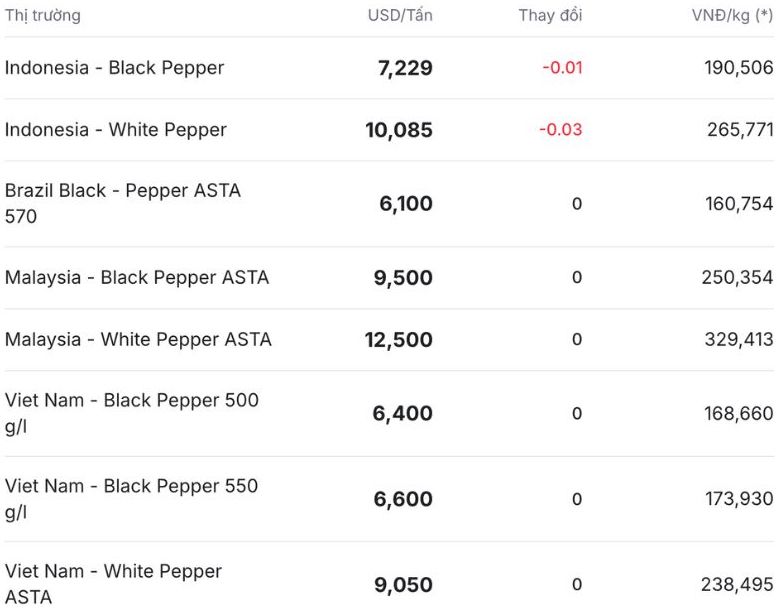Domestic pepper prices: Increase again
As of 11:30 today (October 22), the domestic pepper market is stable in all regions, averaging 145,400 VND/kg. Currently, the price ranges from 144,000 - 146,000 VND/kg.
Gia Lai province today listed 144,000 VND/kg. This is the lowest price in the region.
Ho Chi Minh City and Dong Nai are trading at 145,500 VND/kg.
Lam Dong and Dak Lak set the price at 146,000 VND/kg.
World pepper prices: Indonesia reverses to decrease
In the world market, pepper prices are mostly stable at the end of the week. In particular, the Indonesian exchange - one of the most vibrant markets - "turned around" and appreciated. Currently, these two items are traded between 7,229 - 10,085 USD/ton (equivalent to 190,506 VND/kg - 265,771 VND/kg).
On the other hand, the Brazilian market is flat, currently holding at 6,100 USD/ton (about 160,754 VND/kg). In the same direction, black and white pepper were stable, trading at 12,500 USD/ton and 9,500 USD/ton, respectively.
In the pepper export market of Vietnam, the price of black pepper of 500 g/l and 550 g/l is flat, anchored at 6,400 - 6,600 USD/ton. ASTA white pepper prices remain high, currently standing at 9,050 USD/ton (equivalent to 238,495 VND/kg).

Assessment and forecast
World pepper prices have been continuously reversing recently due to fluctuations in the domestic currency and supply conditions. However, in the context of increasingly complex crop epidemics and increasingly severe climate change, maintaining productivity and quality of pepper is becoming difficult and there needs to be a systematic investment solution for the variety. Pepper prices are expected to continue to remain high in the coming time due to declining global supply, while demand in the world market is showing a recovery trend.
According to the Import-Export Department, in the short term, domestic pepper prices will likely maintain the range of 145,000 - 155,000 VND/kg. If supply continues to tighten, prices may increase to over VND155,000/kg by the end of October 2025. On the contrary, in the case of farmers who sell heavily when entering the new harvest season, prices can be adjusted down slightly.











